Qualcomm's Cloud AI 100 Now Sampling: Up to 400TOPs at 75W
by Andrei Frumusanu on September 16, 2020 9:30 AM EST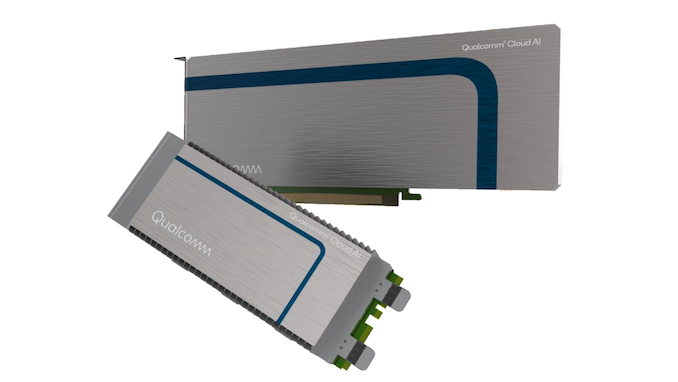
Today Qualcomm is revealing more information on last year’s announced “Cloud AI 100” inference chip and platform. The new inference platform by the company is said to have entered production already with the first silicon successfully coming back, and with first customer sampling having started.
The Cloud AI 100 is Qualcomm’s first foray into the datacentre AI inference accelerator business, representing the company’s investments into machine learning and leveraging their expertise in the area from the consumer mobile SoC world, and bringing it to the enterprise market. Qualcomm had first revealed the Cloud AI 100 early last year, although admittedly this was more of a paper launch rather than a disclosure of what the hardware actually brought to the table.
Today, with actual silicon in the lab, Qualcomm is divulging more details about the architecture and performance and power targets of the inferencing design.
Starting off at a high-level, Qualcomm is presenting us with the various performance targets that the Cloud AI 100 chip is meant to achieve in its various form-factor deployments.
Qualcomm is aiming three different form-factors in terms of commercialisation of the solution: A full-blown PCIe form-factor accelerator card which is meant to achieve up to an astounding 400TOPs inference performance at 75W TDP, and two DM.2 and DM.2e form-factor cards with respectively 25W and 15W TDPs. The DM2 form-factor is akin to two M.2 connectors next to each other and gaining popularity in the enterprise market, with the DM.2e design representing a smaller and lower-power thermal envelope form-factor.
Qualcomm explains that from an architecture perspective, the design follows the learnings gained from the company’s neural processing units that it had deployed in the mobile Snapdragon SoC, however is still a distinct architecture that’s been designed from the ground up, optimised for enterprise workloads.
The big advantage of a dedicated AI design over current general-purpose computing hardware such as CPUs or even FPGAs or GPUs is that dedicated purpose-built hardware is able to achieve both higher performance and much higher power efficiency targets that are otherwise out of reach of “traditional” platforms.
In terms of performance figures, Qualcomm presented ResNet-50 inference per second per watt figures against the currently most commonly deployed industry solutions, including Intel’s Goya inference accelerator or Nvidia’s inference targeted T4 accelerator which is based on a cut-down TU104 GPU die.
The Cloud AI 100 is said to achieve significant leaps in terms of performance/W over its competition, although we have to note that this chart does mix up quite a lot of form-factors as well as power targets as well as absolute performance targets, not being an apples-to-apples comparison.
Qualcomm presents the dater in another performance/power chart in which we see a relatively fairer comparison. The most interesting performance claim here is that within the 75W PCIe form-factor, the company claims it’s able to beat even Nvidia’s latest 250W A100 accelerator based on the newest Ampere architecture. Similarly, it’s claiming double the performance of the Goya accelerator at 25% less power.
These performance claims are quite incredible, and that can be explained by the fact that the workload being tested here puts Qualcomm’s architecture in the best possible light. A little more context can be derived from the hardware specification disclosures:
The chip consists of 16 “AI Cores” or AICs, collectively achieving up to 400TOPs of INT8 inference MAC throughput. The chip’s memory subsystem is backed by 4 64-bit LPDDR4X memory controllers running at 2100MHz (LPDDR4X-4200), each of the controllers running 4x 16-bit channels, which would amount to a total system bandwidth of 134GB/s.
For those familiar with the current AI accelerator designs, this bandwidth figure sounds extremely anaemic when put into context against competing design capabilities such as that of the A100 or the Goya accelerator which sport HBM2 memory and bandwidth capabilities of up to 1-1.6TB/s. What Qualcomm does to balance this out is to employ a massive 144MB of on-chip SRAM cache to keep as much memory traffic as possible on-chip.
Qualcomm admits that the architecture will perform differently under workloads whose kernels exceed the on-chip memory footprint, but this was a deliberate design balance that the company had agreed to make with its customers which have specific target workloads needs and requirements. Qualcomm expects that for larger kernels, the workloads will be scale-out across multiple Cloud AI 100 accelerators.
So, while Qualcomm’s performance figures in these specific ResNet-50 look fantastic, it might not paint the whole picture over a wider range of workloads. When asked when we should expect a wider range of benchmark result such as MLPerf submissions, the team did say that they have some sub-tests running internally, however the current short-term software engineering resources are focused on satisfying customer needs and optimising those workloads. Over time, we’ll see wider software support and eventual MLPerf performance figures.
When asked about how the company is achieving such a broad dynamic range (15W to 75W) in terms of power targets with a single silicon design, the company explains that they are tuning the frequency/voltage curves as well as modulating the number of active AI Cores in the design. Imagine that the full 400TOPS 75W design to contain a fully working chip at higher frequencies, while the 15W design might have units disabled as well as running at a lower frequency. The 7nm process node also greatly helps with keeping power consumption low.
The PCIe interface supports the latest 4.0 standard with 8x lanes.
Precision-wise, the architecture supports INT8, INT16 as well as both FP16 and FP32 precisions which should give it plenty of flexibility in terms of supported models. Qualcomm also provides a set of SDKs for support of a set of industry standard runtimes, exchange formats and frameworks.
Qualcomm is currently sampling the Cloud AI 100 to customers with targeted deployments being primarily edge-inference workloads in the industry and commerce. In order to kick-start the ecosystem and enable software development, Qualcomm is also introducing the new Cloud Edge AI 100 Development Kit which consist of an integrated small form-factor computing device housing the Cloud AI 100 accelerator, a Snapdragon 865 system SoC and a X55 5G-modem for cellular connectivity.
Commercial shipments to customers are expected in the first half of 2021.


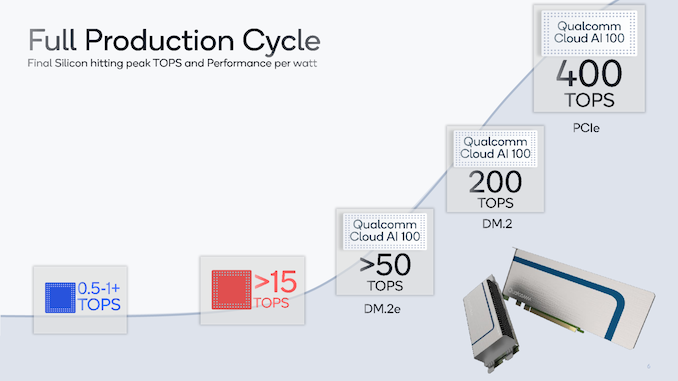
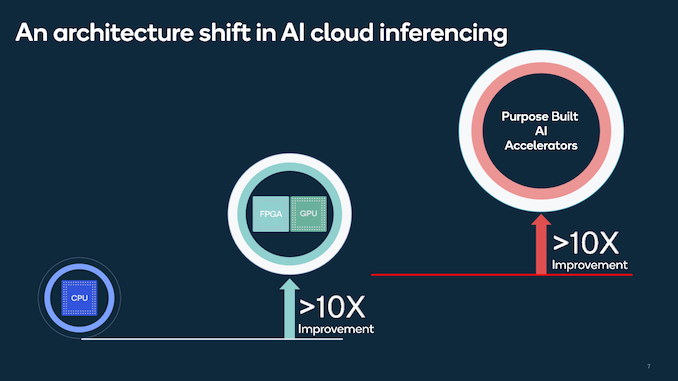
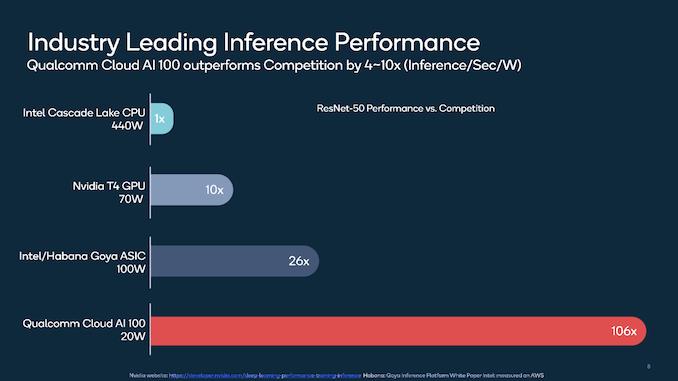
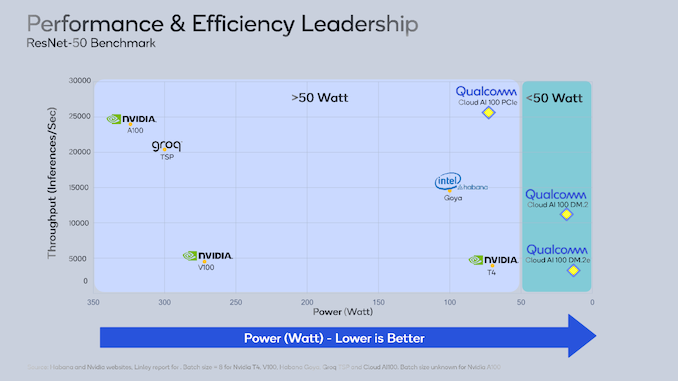
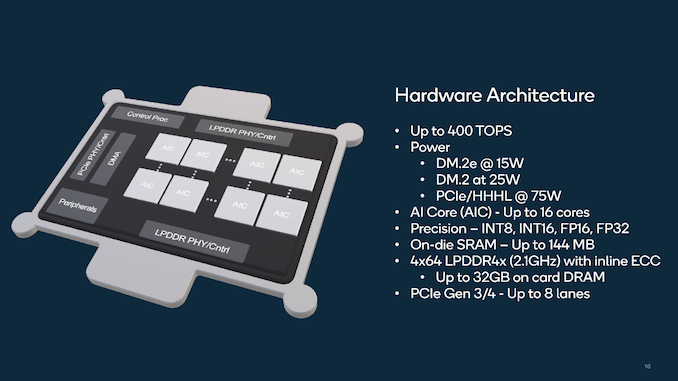
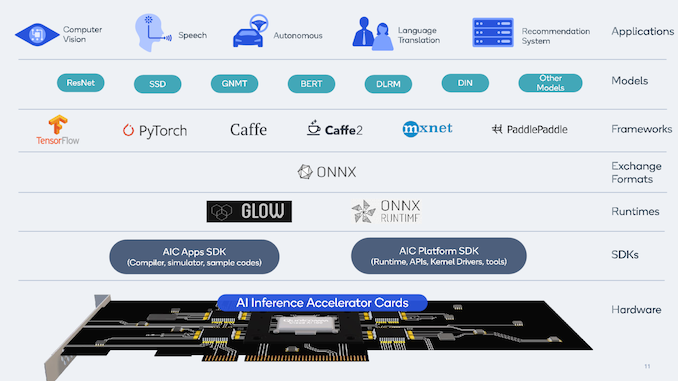
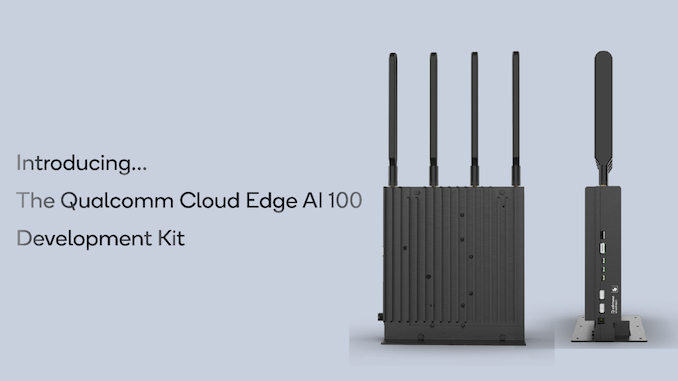
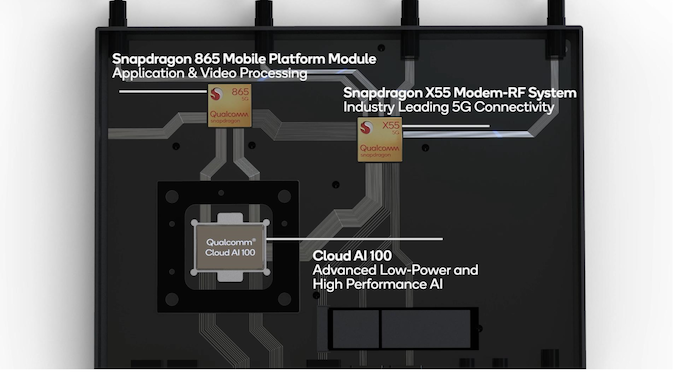








14 Comments
View All Comments
close - Wednesday, September 16, 2020 - link
What would the "Intel Cascade Lake CPU 440W" label in the chart represent? The largest TDP for Cascade Lake is something like 205W.Andrei Frumusanu - Wednesday, September 16, 2020 - link
Dual socket setup.firewrath9 - Thursday, September 17, 2020 - link
It could also be the cascade lake platinum 9200 series, iirc those have ~400w tdpsbst1 - Thursday, September 17, 2020 - link
Xeon Platinum 9282Raqia - Wednesday, September 16, 2020 - link
Did they cite any numbers for bigger benchmarks like Google's BERT? This is still a very deployable solution that can beat out other more power hungry solutions when power consumption and remote connectivity are important.Yojimbo - Wednesday, September 16, 2020 - link
Looks like no., probably because it's not so favorable as BERT can't fit in the cache. They started building it years ago when models were a lot smaller. If models continue to get bigger and bigger internal caches are probably not going to be be able to keep up. Then it becomes a niche product for accelerating small networks very well. Well, they need to publish MLPerf results to let people know what the case really is.Raqia - Wednesday, September 16, 2020 - link
I doubt it will be competitive with something like the A100, but I don't think this will have the same use cases as solutions designed with HBM2. Given the formfactor and connectivity capabilities of the devkit, they are likely targeting deployable configurations that operate outside of data centers and special use cases within the data center. Communication latency to remote clients like cell phones, vehicles, or VR headsets should be much better than something sitting in a datacenter, and there should be a big market for that.Yojimbo - Wednesday, September 16, 2020 - link
Well, the PCIe version is the one that is 75 W and 400 TOPS. With that they are targeting the same market the T4 is in. Both are half height, half length cards.As far the the other two form factors, if it can't actually compete with the A100 and T4 in real world networks then they shouldn't be making the comparison to those cards. That's why it's important to have the benchmarks. Once you get down to the 50 TOPS version, the 134 GB/s memory bandwidth is probably enough to keep it fed. But then the comparison with the A100 is just silly. The proper comparison would be with a Jetson Xavier and then a Jetson Orin when it comes out, assuming there will be one (dunno why there wouldn't be).
Raqia - Thursday, September 17, 2020 - link
The comparison might very well be worthwhile if you run NNs that play into the chip's strengths and care about both the cost of the chip and TCO of your datacenter deployment which includes power consumption for both the chip and cooling. The nVidia designs are also loaded with graphics specific baggage like texture units and ROPs which are a waste of silicon for AI workloads.Yojimbo - Thursday, September 17, 2020 - link
The comparison of a 15 Watt DM.2e NN ASIC to a 350 W general purpose data center accelerator is worthwhile? I don't think so.